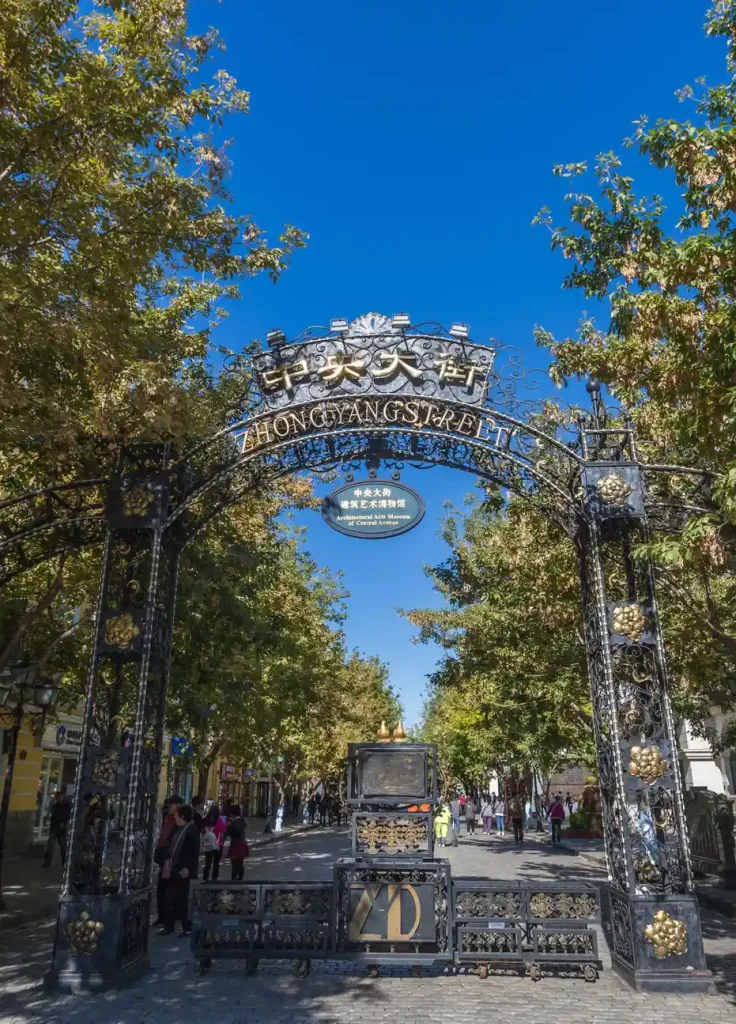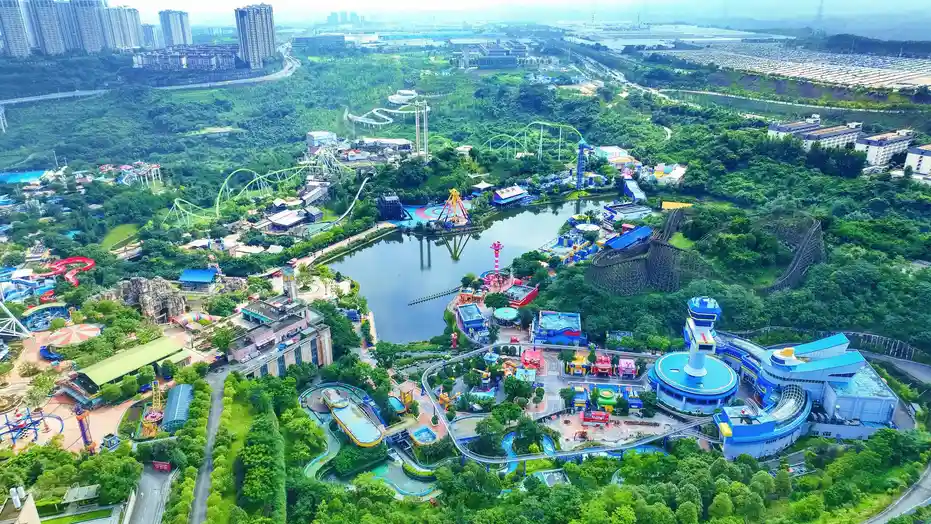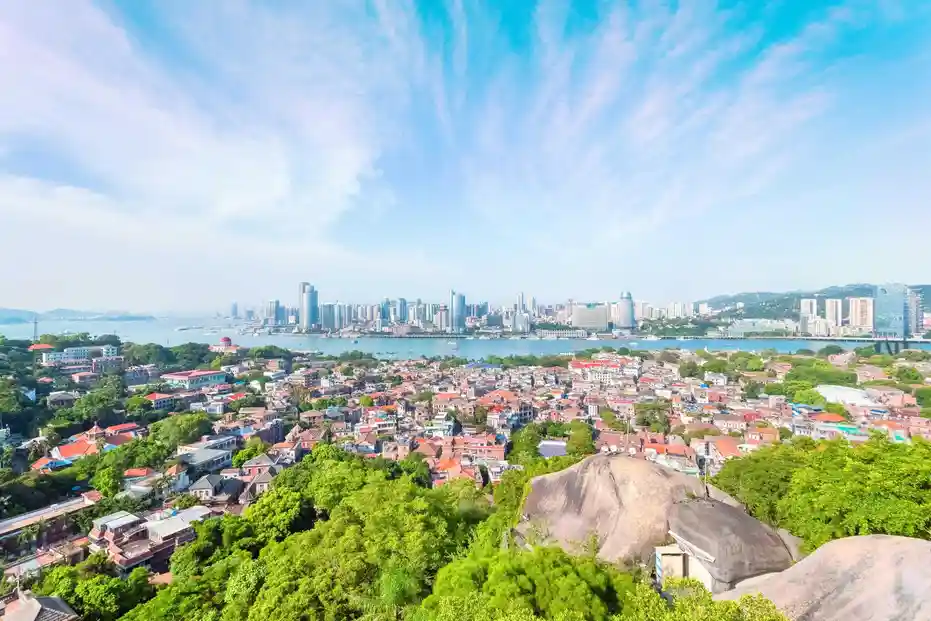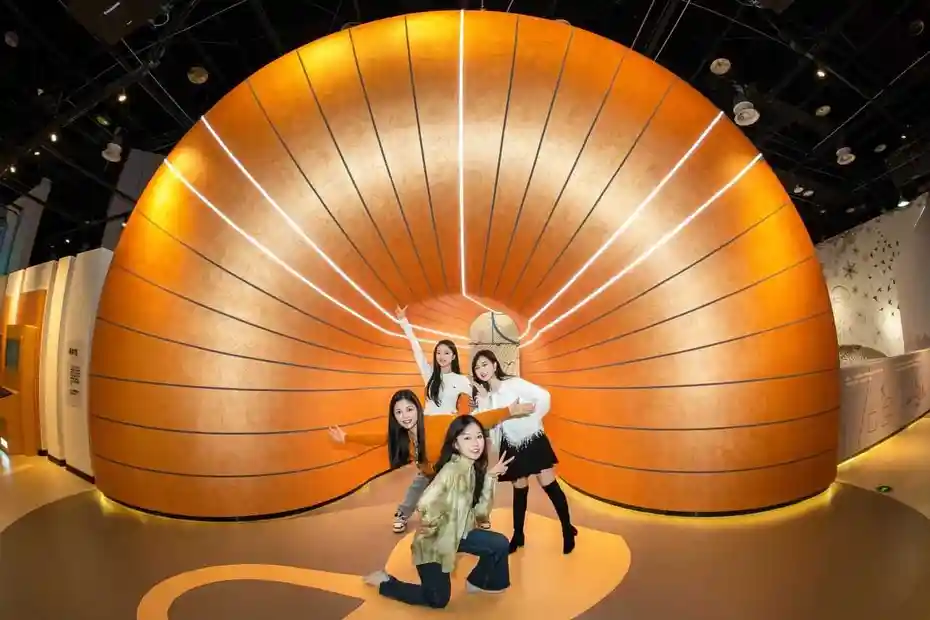Introduction: A Walk Through Time on Harbin’s Iconic Promenade
Harbin Central Street is more than just a shopping avenue. It’s a living museum of architecture, culture, and history. Located in the heart of China’s northernmost major city, this pedestrian-only boulevard stretches nearly 1.5 kilometers through the bustling Daoli District.
Every cobblestone tells a story. Built in 1905, the street was once part of the Russian-influenced Chinese Eastern Railway zone. Today, it blends European charm with modern Chinese energy. Visitors stroll beneath ornate facades while sampling ice cream from century-old shops or snapping photos of baroque-style buildings.
This article explores the rich layers of Harbin Central Street — its historical roots, architectural wonders, cultural highlights, and top experiences for travelers. Whether you’re planning a visit or exploring virtually, discover why this landmark remains one of Northeast China’s most captivating destinations.
From seasonal festivals to hidden courtyards, we’ll guide you through must-see spots and lesser-known details that bring the street to life. Let’s step into the past and present of one of China’s most unique urban spaces.
A Historical Journey: How Harbin Central Street Came to Be
Harbin emerged as a key transportation hub in the late 19th century. The construction of the Chinese Eastern Railway brought Russian engineers, merchants, and architects to the region. By 1898, Harbin was rapidly transforming into an international city.
In 1905, what would become Harbin Central Street was officially paved using shaped stone blocks. These stones, imported from Russia, were laid in a tight herringbone pattern designed to withstand freezing winters. At the time, few cities in Asia had such advanced urban infrastructure.
The street quickly became a commercial center. Russians, Jews, Poles, and Chinese traders opened shops selling everything from furs to French perfumes. Western-style banks, hotels, and cafes lined the avenue, reflecting the multicultural fabric of early 20th-century Harbin.
During the 1920s and 1930s, despite political upheaval, the street thrived. After the founding of the People’s Republic of China in 1949, many foreign residents left. Yet the architectural legacy remained untouched.
Today, walking along Harbin Central Street feels like stepping into a Eurasian crossroads frozen in time. Preservation efforts have maintained over 70 protected historical buildings. This blend of resilience and reinvention makes the street not just beautiful—but historically significant.
Architectural Marvels: A European Showcase in Northern China
One of the most striking features of Harbin Central Street is its diverse architectural styles. Unlike other Chinese cities where traditional designs dominate, here you’ll find influences from Russia, Greece, Germany, and France.
Key styles include:
- Baroque: Elaborate carvings, domes, and dramatic entrances.
- Neoclassical: Symmetrical façades, columns, and pediments inspired by ancient Greece.
- Art Nouveau: Flowing lines, floral motifs, and stained glass details.
- Byzantine: Onion-shaped domes and intricate mosaics.
The St. Sophia Cathedral, though slightly off the main strip, exemplifies Byzantine-Russian design. Once an Orthodox church, it now serves as a museum showcasing Harbin’s multicultural past.
Another highlight is the Mackar International Hotel building. Originally constructed in the early 1900s, its yellow brick façade and arched windows reflect German Renaissance influence. Nearby, the former Russian bank buildings feature Corinthian columns and sculpted reliefs.
What sets these structures apart is their authenticity. Most were built between 1900 and 1930 and restored carefully during urban renewal projects in the 1980s and 2000s. Materials like terracotta tiles, wrought iron railings, and hand-carved woodwork remain intact.
Even street furniture contributes to the atmosphere. Lampposts mimic early 20th-century European designs, while stone benches echo those found in Moscow or Warsaw. Every detail reinforces the illusion of being in Eastern Europe—yet snow-covered Harbin gives it a uniquely northern character.
Cultural Fusion: Where East Meets West on the Pavement
Harbin Central Street has always been a melting pot. In the early 1900s, signs were written in Russian, Yiddish, and Chinese. Musicians played balalaikas outside cafés serving borscht and dumplings side by side.
Though much has changed, cultural fusion still defines daily life here. You can buy traditional Chinese calligraphy scrolls next to Russian nesting dolls. Vendors sell red sausage (a local favorite with Polish roots) alongside sweet glutinous rice cakes.
Language reflects this blend too. Locals often use loanwords like “charlotte” (for cake) or “saliang” (from the Russian “salon,” meaning shop). Older generations may recall families speaking both Mandarin and Russian at home.
Festivals amplify this identity. During the annual Harbin Ice and Snow Festival, the street becomes a stage for performances blending Chinese opera with Slavic folk dances. Light installations illuminate historic buildings, drawing thousands each winter.
Even cuisine tells a story. Restaurants like Lao Kaibin serve dishes developed during the railway era—think beef goulash with pickled vegetables or pelmeni dumplings adapted to local tastes.
This enduring mix isn’t accidental. City planners recognize that Harbin’s uniqueness lies in its hybrid heritage. Efforts continue to promote bilingual signage, cultural exhibitions, and music events that honor all communities who shaped the city.
Must-Visit Attractions Along Harbin Central Street
While the entire stretch offers visual delight, several landmarks stand out. Here are five essential stops when visiting Harbin Central Street:
St. Sophia Cathedral Square
Once an active Orthodox church, this red-brick cathedral is now a museum dedicated to Harbin’s history. Climb the bell tower for panoramic views of the surrounding area. The square hosts seasonal markets and photo exhibitions.
Mackar International Hotel Building
A fine example of German Renaissance revival style. Though no longer operating as a hotel, its grand entrance and preserved interior courtyard attract photographers and architecture enthusiasts.
Old Drugstore Museum
Housed in a 1910s apothecary, this small museum displays vintage medical tools, herbal remedies, and multilingual prescription labels from the early 20th century. It offers rare insight into public health during Harbin’s cosmopolitan peak.
Central Street Pedestrian Zone
The heart of the experience. Open only to foot traffic, this section buzzes with activity day and night. Look down—the original granite cobblestones are inscribed with dates and origin marks from Russian quarries.
The Ice Cream Parlor at No. 73
Run by the same family since 1920, this tiny shop serves handmade ice cream using a secret recipe involving condensed milk and egg yolk. Locals swear it never melts too fast—even in summer heat.
Each site adds depth to your understanding of how commerce, faith, and daily life intertwined on Harbin Central Street over the decades.
Shopping and Dining: Savoring the Flavors and Finds
Retail therapy and culinary exploration go hand-in-hand on Harbin Central Street. While souvenir stalls sell postcards and fur hats, discerning visitors seek authentic local products.
Popular food items include:
- Harbin Red Sausage: Smoked with garlic and beef, best enjoyed fresh from street vendors.
- Ice Wine: Made from grapes harvested in sub-zero temperatures; pairs well with cheese.
- Sunflower Seeds: Roasted and salted, a classic snack while strolling.
For sit-down meals, try:
| Restaurant | Specialty | Why Visit |
|---|---|---|
| Lao Kaibin | Russian-Chinese fusion | Historic ambiance; menu unchanged since 1930s |
| Ma Duo Ba Duo | Pelmeni & borscht | Family-run; uses heirloom recipes |
| Jin Chun Lin | Northeastern hotpot | Local favorite; open late |
Shopping options range from high-end boutiques to craft kiosks. Look for hand-knit wool scarves, wooden matryoshka dolls, and locally made soaps infused with pine oil.
Avoid mass-produced trinkets near the eastern entrance. Instead, explore side alleys where independent artisans display pottery, paintings, and leather goods.
Cash is less common now—most vendors accept WeChat Pay or Alipay. Credit cards work in larger stores, but carry digital payment backups.
Seasonal Highlights: Experiencing Harbin Central Street Year-Round
The character of Harbin Central Street shifts dramatically with the seasons. Each time of year brings distinct appeal.
Winter (December–February):
This is peak season. As host to the world-famous Harbin Ice and Snow Festival, the street glows with illuminated ice sculptures. Temperatures drop below -20°C, but heated cafes and thick coats make exploration cozy.
Spring (March–May):
Snow melts to reveal clean stone pathways. Cherry blossoms bloom in nearby parks. Fewer tourists mean quieter walks and better photo opportunities.
Summer (June–August):
Temperatures average 25°C. Outdoor seating fills with locals enjoying evening breezes. Street performers appear regularly, playing violins or dancing in period costumes.
Autumn (September–November):
Golden foliage frames the buildings. It’s harvest season for apples and walnuts, sold fresh at roadside stands. The air turns crisp, perfect for long walks.
No matter the season, lighting plays a big role. At dusk, golden lamps cast a warm glow on the aged brickwork. Nighttime transforms the street into a romantic promenade—ideal for couples or reflective solo walks.
Visitor Tips: Making the Most of Your Trip
To fully enjoy Harbin Central Street, plan ahead. Here are practical suggestions:
– **Best Time to Visit:** Early morning (8–10 AM) or late evening (after 8 PM) to avoid crowds.
– **Footwear Matters:** Wear non-slip shoes. Cobblestones can be icy in winter and uneven underfoot.
– **Transportation:** Take Metro Line 2 to Central Street Station. Exit B opens directly onto the pedestrian zone.
– **Photography:** Sunrise offers soft light and empty streets. Use a wide-angle lens to capture full façades.
– **Accessibility:** Ramps are available at major intersections, though some older sections have slight inclines.
Bring a power bank—charging ports are limited. Download offline maps, as GPS can be spotty between tall buildings.
If traveling with children, stop by the toy museum near the western end. For seniors, rest areas with seating are located every 300 meters.
Lastly, engage with locals respectfully. Many appreciate simple greetings in Russian or basic Mandarin phrases. A smile goes a long way.
Conclusion: Why Harbin Central Street Endures as a Cultural Treasure
Harbin Central Street is more than a tourist destination. It’s a testament to cultural exchange, urban resilience, and architectural beauty. From its Russian origins to its role in modern Chinese tourism, the street bridges continents and centuries.
Its survival through wars, regime changes, and economic shifts speaks to its symbolic importance. Today, preservation laws protect its integrity while allowing vibrant commercial life to flourish.
For travelers, the street offers a rare chance to walk through history without leaving the present behind. Every shopfront, sculpture, and scent carries memory.
As global interest in niche cultural sites grows, Harbin Central Street stands poised to attract deeper appreciation—not just for its looks, but for its layered narrative.
Whether you come for the ice cream, the architecture, or the quiet moments between passing crowds, the street leaves a lasting impression. Visit once, and you’ll understand why it remains one of China’s most unforgettable urban experiences.



